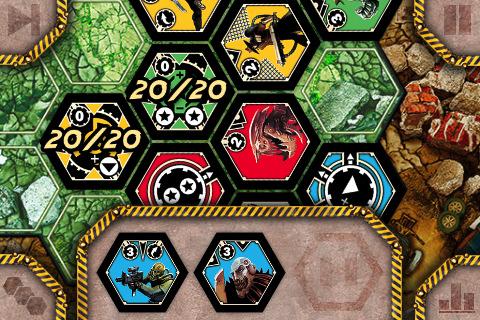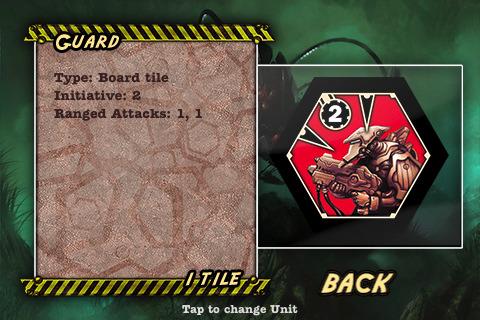- Wondering how to get Monopoly GO! free rolls? Well, you’ve come to the right place. In this guide, we provide you with a bunch of tips and tricks to get some free rolls for the hit new mobile game. We’ll …
Best Roblox Horror Games to Play Right Now – Updated Weekly
By Adele Wilson
Our Best Roblox Horror Games guide features the scariest and most creative experiences to play right now on the platform!The BEST Roblox Games of The Week – Games You Need To Play!
By Sho Roberts
Our feature shares our pick for the Best Roblox Games of the week! With our feature, we guarantee you'll find something new to play!Type Soul Clan Rarity Guide – All Legendary And Common Clans Listed!
By Nathan Ball
Wondering what your odds of rolling a particular Clan are? Wonder no more, with my handy Type Soul Clan Rarity guide.
Neuroshima Hex Review
If you were fortunate enough to enjoy the game Everlands, you’ll find many similarities here in Neuroshima Hex. They’re both hex based tactical games where you’ll be placing tiles and attacking your opponents. But where Everlands used cute animals as your units, Neuroshima Hex uses proper military might. Well, maybe not “proper,” but they’re soldiers, so the fact that they’re killing each other makes a little more sense.

Neuroshima Hex Review
If you were fortunate enough to enjoy the game Everlands, you’ll find many similarities here in Neuroshima Hex. They’re both hex based tactical games where you’ll be placing tiles and attacking your opponents. But where Everlands used cute animals as your units, Neuroshima Hex uses proper military might. Well, maybe not “proper,” but they’re soldiers, so the fact that they’re killing each other makes a little more sense.
I make the comparison to Everlands since I am both very familiar with it and very much enjoyed playing it. That being said, I think Neuroshima Hex is both a deeper and ultimately more satisfying game once you get the gameplay and strategy down. It’s an easy game to get down, on since it’ll take a few games before you’re able to not get your butt kicked, let alone win.

The game is set in a sort of post-apocalyptic war torn world where you’ll battle to destroy each other’s bases using different hex pieces representing a variety of soldier types. They have unique skills and abilities, and will both attack and defend various adjacent enemy pieces on the board.
Battles don’t happen automatically. You’ll take turns placing units and preparing for fights, but it’s only when someone plays the battle tile do things start getting violent. When someone plays that tile, all available attacks on the board will happen for both sides. It’s a game of cat and mouse when deciding to play that tile, since you know you’ll both attack and get hit back. This mechanic helped make each game unique and really added to the strategy.
There are a ton of different units and power tiles, so it’s going to take some time before you’re really comfortable with all the options available to you. For awhile I considered myself in the “think on your feet” camp, simply reacting to the types of tiles I would get as opposed to trying to learn everything I have available to me from the get-go.
The biggest disappointment was Neuroshima Hex‘s lack of an online multiplayer. Being based on a very popular board game, the mechanics are practically screaming for human players at the helm, and pass and play only gets you so far. At this point in the iPhone’s life, it’s only natural to expect games like this to have multiplayer over the net built in.

The tutorial, it should be noted, is a bit of a joke. I still consider Carcassone to be the creme-de-la-creme when it comes to iPhone tutorials since it’s totally interactive and crystal clear on the rules. What we have in Neuroshima Hex is a video that plays but looks exactly like the game field. The prompt will come up saying “Your Turn” and your inclination will be to tap the screen, but all that does is bring up the video controls. Instead you’ll watch a virtual finger move around the screen and click the stuff it says to click. It’s both disconcerting and unnecessary to have to watch a video clip to learn a game. It’s honestly worse that just having a few pages of rules to read, but these kinds of games are best served with something interactive.
If you’re the kind of person that enjoys good tactical war games and ever evolving battlefields with changing conditions then I think you’ll be quite happy with what you’ll get with Neuroshima Hex. It’s a deeply satisfying game that forces you to have a tactical mind in order to win, and it’s incredibly fulfilling when you do. Neuroshima Hex is easily worth the price of admission.

The good

The bad
More articles...
Monopoly GO! Free Rolls – Links For Free Dice
By Glen Fox
Wondering how to get Monopoly GO! free rolls? Well, you’ve come to the right place. In this guide, we provide you with a bunch of tips and tricks to get some free rolls for the hit new mobile game. We’ll …Best Roblox Horror Games to Play Right Now – Updated Weekly
By Adele Wilson
Our Best Roblox Horror Games guide features the scariest and most creative experiences to play right now on the platform!The BEST Roblox Games of The Week – Games You Need To Play!
By Sho Roberts
Our feature shares our pick for the Best Roblox Games of the week! With our feature, we guarantee you'll find something new to play!Type Soul Clan Rarity Guide – All Legendary And Common Clans Listed!
By Nathan Ball
Wondering what your odds of rolling a particular Clan are? Wonder no more, with my handy Type Soul Clan Rarity guide.







